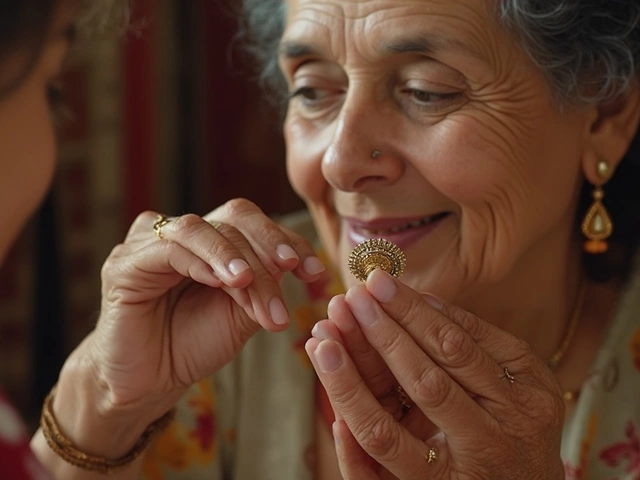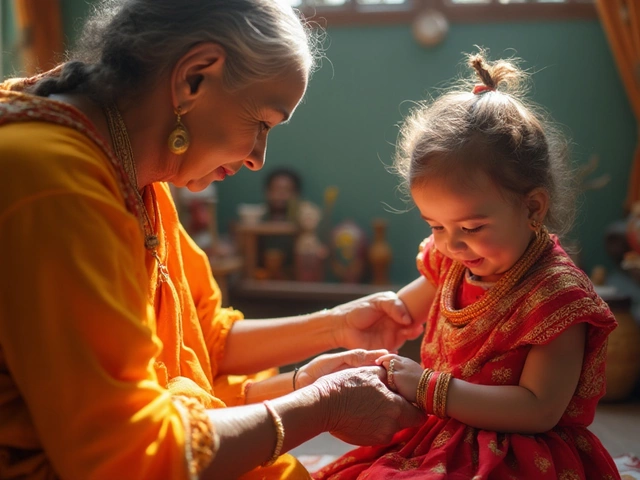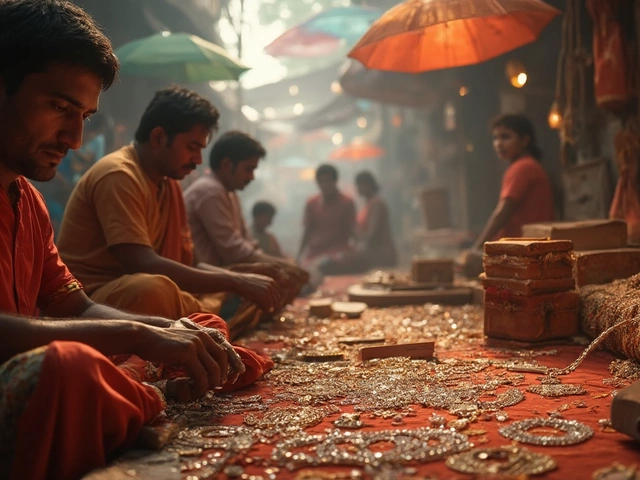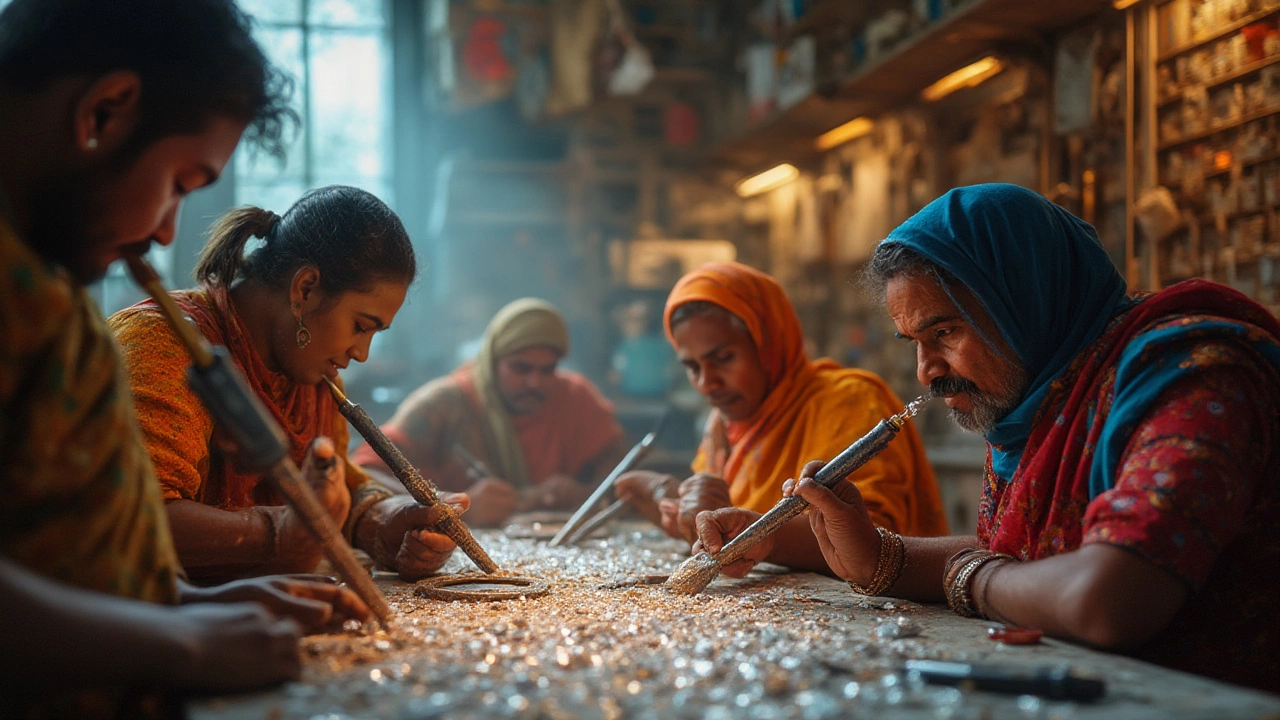
You probably have a glittering image in your head when someone mentions diamonds. But did you know that most of those sparkly gems have probably passed through a single city in India—Surat? It’s not some dusty old hub hiding away in the back alleys of a jewelry story. Surat is a bustling, lively city that plays the starring role in the world’s diamond drama. Here, billions of dollars' worth of diamonds are cut, polished, graded, and traded every single year. At first, this doesn’t sound all that wild—India has been obsessed with gems and jewelry for thousands of years, after all. Still, the scale might surprise you—because Surat is often called "Diamond City" for a reason. Let’s dig in, lay out some jaw-dropping facts, and see what really makes Surat the planet’s favorite stop on a diamond’s long journey from the earth to your finger.
The Glittering Rise of Surat: How It Became Diamond City
Picture this: decades ago, diamonds from South Africa, Russia, and Australia would travel halfway across the world just to end up in Surat. That’s still the story today. But why Surat, out of all the cities in India or the world? Here’s where history gives us some clues. Surat’s diamond journey actually kicked off during the 1960s and early 1970s. Back then, most of the world’s diamond-cutting action happened in Belgium (think Antwerp), Israel, and New York. But as demand for smaller, less expensive diamonds grew, big western companies needed a place where skilled labor wouldn’t cost them a fortune. That’s when Surat’s skilled artisans—people with serious focus and nimble hands—stepped in.
Indian entrepreneurs saw the huge demand and set up small workshops crammed into homes or modest buildings all around Surat. Kids, parents, and relatives got involved. Within a generation, the talent pool grew so deep, entire neighborhoods were dedicated to just one thing—diamond cutting. Buyers soon realized the city could match European quality at a fraction of the cost, and just like that, Surat transformed into the world’s biggest diamond cutting and polishing hub.
Fast-forward to today, and Surat is where almost 90% of the world’s diamonds get processed in some shape or form. Bet you didn’t see that number coming. The city’s industries turn over $24 billion each year, according to the Gem & Jewellery Export Promotion Council. That means basically every second diamond you see on a wedding ring, necklace, or earring has probably spent some time under a Surat jeweler’s loupe. Antwerp might be the marketplace, but Surat is the sweat and shine behind the sparkle.
| Year | Diamonds Processed (approx % of world) | Value (USD) |
|---|---|---|
| 1980 | 20% | $0.8 billion |
| 2000 | 60% | $7 billion |
| 2024 | 90% | $24 billion |
Inside the Diamond Industry: Life and Labor in Surat
So what does the diamond biz in Surat actually look like? This isn’t just about big companies and fat profits; it’s about families and entire communities who depend on diamonds for a living. Walk through Varachha, Mahidharpura, and Katargam (the main diamond neighborhoods), and you’ll see a side of India you never imagined. Row after row of bustling workshops, sleek offices, banks, and humble tea stalls line the streets, all tied together by the same sparkly thread.
These workshops—imagine small, sunlit rooms with rows of workers hunched over microscopes—run from early morning till late evening. Here, skilled workers (some with decades of experience) use diamond-tipped tools to shape rough gems, polish them to a blinding shine, and examine every flaw under powerful lamps. It’s painstaking, sometimes backbreaking work, demanding focus and a steady hand. The tiniest mistake can turn a valuable gem into a worthless chip. And it’s not just old-school methods: modern Surat is wired with high-tech lasers, x-ray machines, and computer-guided saws. The big diamond companies in the city are building global reputations on precision and reliability.
There’s also a softer side to the community. Many companies offer in-house medical care, daycares, and educational programs for families of workers. Larger factories even have accident insurance and paid time off—privileges not always common in every Indian manufacturing sector. Whenever I talk to friends from Surat about their city’s diamond story, there’s always mention of pride. Generations have learned the trade, and even today, most of the knowledge passes from father to son, mother to daughter, inside the same family.
Roughly 500,000 people find work somewhere along this sparkling supply chain, from sorters and cutters to traders, jewelers, and exporters. At local tea stalls, the air often buzzes with talk of rising gold and diamond prices, global fashion trends, and which shipment is headed for Hong Kong or New York next week. If you’re looking for a heartbeat, this is it.
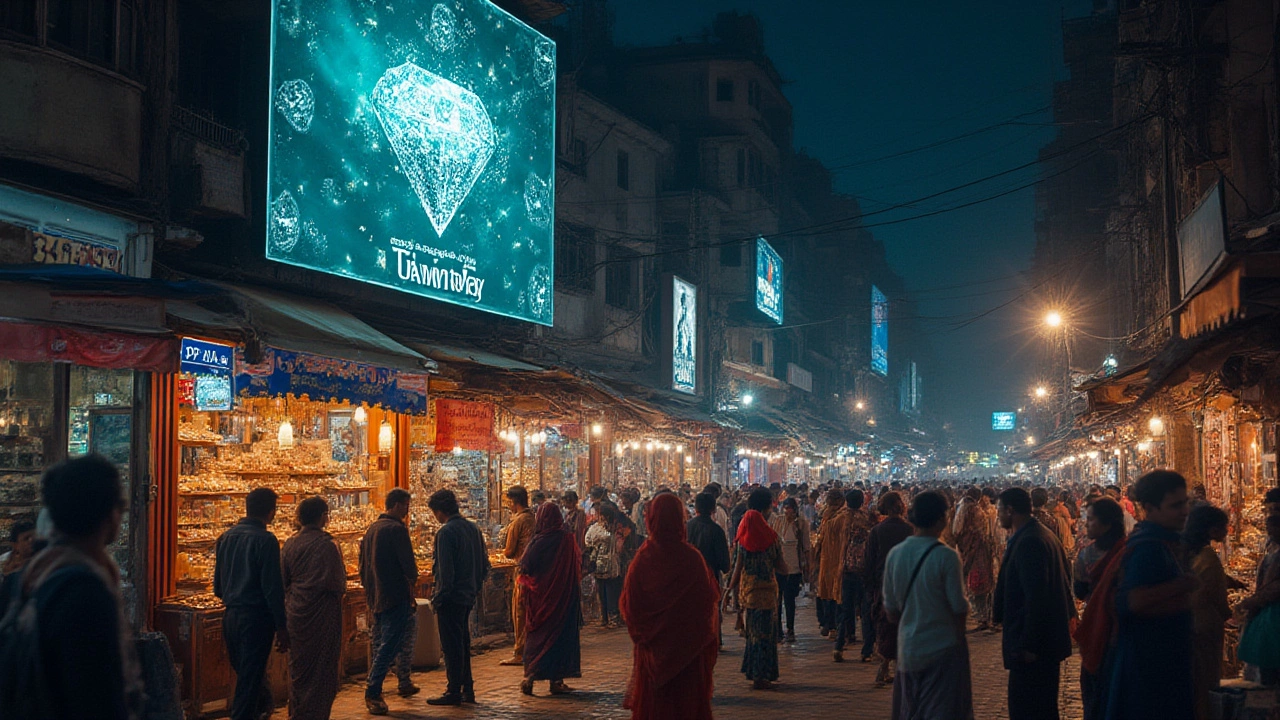
What Makes Surat Diamonds Special: Skill, Technology, and Scale
You might wonder why a city like Surat dominates in diamonds when there are so many other places with access to the same stones. There’s a simple answer: the perfect combo of skill, tech, and massive scale. The average diamond worker in Surat doesn’t just cut gems—they help craft beauty that ends up in luxury stores from Dubai to Paris. The best of the best can work with stones as small as 0.01 carats and still get perfect symmetry. Want an example? Last year, a single Surat factory set a world record by cutting a diamond with 57,000 facets (that’s right—57,000!), compared to a standard brilliant cut’s 57 to 58 facets.
As for tech, Surat is no slouch. Walk into any advanced factory, and you’ll see laser-guided saws, 3D scanning machines, and automatic flaw detectors. There’s even software that maps out the most valuable way to cut each rough stone, so practically nothing gets wasted. Supervisors often track worker performance using custom apps. No surprise, then, that many global jewelers have either set up offices in Surat or rely almost entirely on Indian exporters for their supply.
This isn’t just about big rocks. Surat handles everything—small melee diamonds, tiny accent stones, fancy colors, and even lab-grown diamonds (yep, that trend has caught on in a big way lately). Local factories compete not only on price, but also turnaround time: a rough diamond can show up in the morning and leave, fully cut and graded, the very next day. That level of efficiency and adaptability is rare anywhere else in the diamond world.
On the numbers side, according to the Surat Diamond Association, nearly 14 out of every 15 diamonds sold globally are processed here. The annual exports just keep growing, too. It’s wild to think about, given that most visitors outside India can’t point to Surat on a map.
Visiting Surat: What to See, Buy, and Know
Now, maybe you’re asking yourself—could you, as a traveler or diamond lover, go see the magic firsthand? The good news: Surat actually welcomes visitors, whether you’re a jewelry buyer, a designer, or just plain curious. The city isn’t set up for typical sightseeing, but its diamond heritage shows up everywhere, from busy commercial districts to glitzy showrooms.
Local markets are packed with dealers showing off their latest stones, and some of the larger diamond houses offer private tours (though you might need an appointment or a local connection to get in). If you’re looking to buy diamonds, Surat can offer deals that are tough to beat in big cities abroad—as long as you’re careful. Here’s my best tip: always check for certification. Look for stones graded by independent labs like GIA or IGI, and don’t be afraid to ask lots of questions. If you get the chance to visit a factory, don’t miss it. Watching artisans turn muddy-looking rough stones into something dazzling is a real treat, even if you’re not a jewelry nut.
For a deeper dive, check out the Sparkle International Exhibition, held every year. It’s sort of a mini Baselworld for diamonds and jewelry. Dealers, collectors, and designers gather in town to show off rare gems, new technologies, and the next trends in fine jewelry. And here’s a quirky detail: you’ll see a lot of family-run workshops where several generations work side by side. My wife, Maya, once spent an afternoon chatting with a mother-daughter duo about the delicate process of diamond sorting. The pride and joy in their stories say more than any brochure or guidebook.
If you want an authentic bite, try the local Surti locho or undhiyu. And don’t leave without catching sunset by the Tapi river—the city glows with the same quiet shimmer as its best stones.
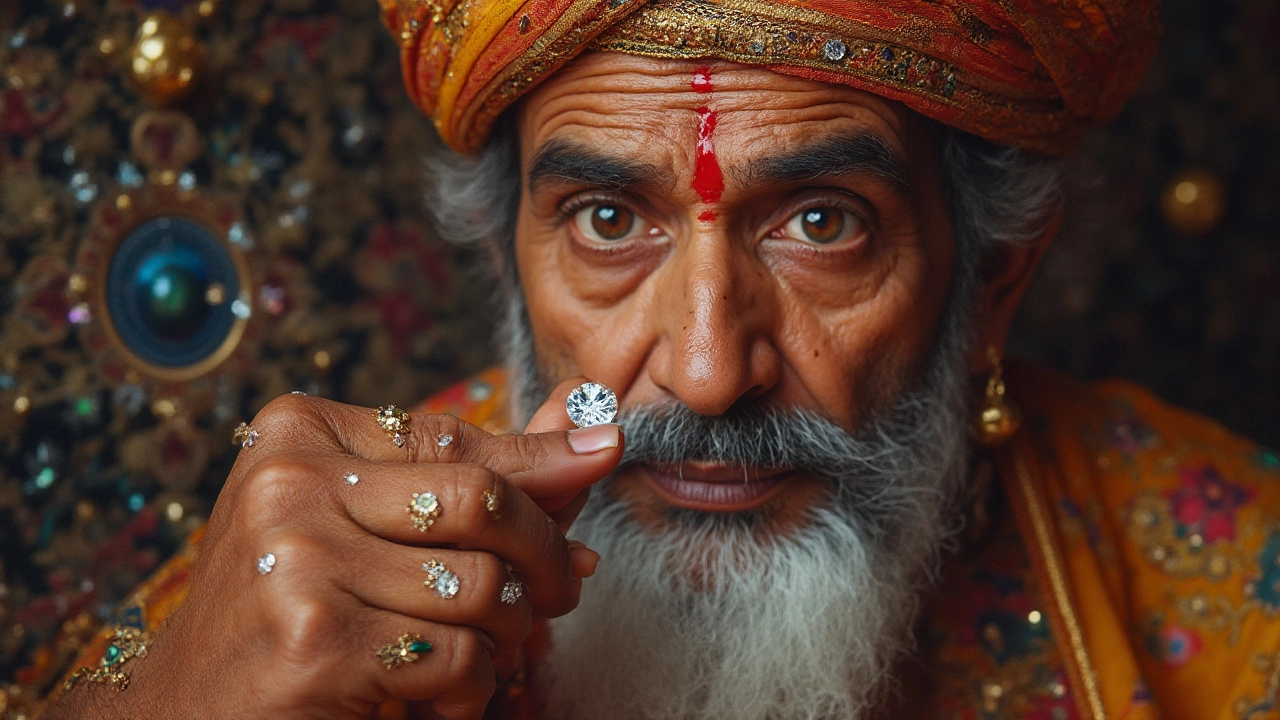
Beyond Surat: Other Diamond Hotspots in India
Alright, so Surat wears the diamond crown, but it’s definitely not alone in India’s gem saga. The trade stretches out into neighboring cities and states, each serving a unique role. For example, Mumbai (just a few hours down the highway) acts as the main export port, with giant trading floors buzzing with deals every single day. Major jewelry brands use Mumbai's Bharat Diamond Bourse like their own front office—think of it as a Wall Street for diamonds.
Then there’s Navsari, a smaller sister city near Surat, plus Bhavnagar and Ahmedabad—each home to unique boutique workshops and family-run cutting businesses. Jaipur, further north, carves a niche with colored stones and traditional jadau jewelry, but you’ll still find diamond traders crowding its historic markets. Kolkata, in the east, also has an old-school reputation for antique and heirloom gems.
Still, when it comes to sheer numbers, no city matches Surat’s cutting edge. According to data from the Indian Ministry of Commerce, over 80% of the country’s diamond exports are shipped out of Gujarat, with Surat leading the pack. Even lab-grown diamonds—those newer, conflict-free alternatives—are now a booming business in Surat, with nearly 250 specialist units set up in the past few years. This means the city is future-proofing itself as more buyers seek sustainable bling.
If you’re obsessed with jewelry, it’s worth remembering that the "Diamond City" title isn’t just about raw stones. It stands for skill, community, hustle, and a touch of old-school Indian passion. Next time you catch a sparkle in your favorite ring or pair of earrings, there’s a good chance it’s carried a bit of Surat’s energy along for the ride.
